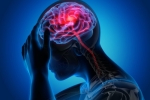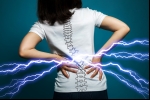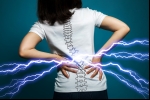Home »
Blog » Pain Management
| Stem Cell, PRP, Acupuncture in Queens & Long Island, New York
Pain Management | Stem Cell, PRP, Acupuncture in Queens & Long Island, New York
As the COVID-19 pandemic continues, patients with chronic diseases can find that stay-at-home orders pose added challenges. In many areas, medical care has been pared down to mostly urgent doctor visits, procedures, surgeries, and diagnostic tests. Many pain patients may find access to medical care or treatment more limited than ever. And stay-at-home orders can also mean spending more time around spouses, family members, or roommates, which can add even more stress to what is already a very high-anxiety situation.
Read more
When your lower back pain flares up, you may reach for ice, heat, or pain-killers to alleviate your symptoms. But have you considered electrotherapy? No single treatment works for everyone, but applying electrotherapy to your lower back may help you find short-term relief from your pain or discomfort.
What is electrotherapy? - Electrotherapy typically involves the use of a battery-powered device that supplies a current to small electrodes (which attach to your back). This in turn sends electrical pulses to the area of your lower back experiencing symptoms. There are numerous kinds of electrotherapy devices available, but the most popular ones are transcutaneous electrical nerve stimulation (TENS) units.
Read more
Migraine involves intense, throbbing headaches, often accompanied by nausea, vomiting, and extreme sensitivity to light and sound. These headaches are never pleasant, but if they occur almost daily, they can seriously disrupt your life. If you experience 15 or more headache days each month, you’re likely dealing with chronic migraines. About 2.5 percent of people with episodic migraine transition to chronic migraines every year. You don’t have to settle for living most of your days in pain. Bring these questions to your doctor so you can get started on treatment to reduce the frequency and intensity of your symptoms.
Read more
Joints form the connections between bones. They provide support and help you move. Any damage to the joints from disease or injury can interfere with your movement and cause a lot of pain. Many different conditions can lead to painful joints, including osteoarthritis, rheumatoid arthritis, bursitis, gout, strains, sprains, and other injuries. Joint pain is extremely common. In one national survey, about one-third of adults reported having joint pain within the past 30 days. Knee pain was the most common complaint, followed by shoulder and hip pain, but joint pain can affect any part of your body, from your ankles and feet to your shoulders and hands. As you get older, painful joints become increasingly more common.
Read more
What is a rotator cuff tear? - A rotator cuff is a group of four muscles and tendons that help stabilize the shoulder. They also aid in movement. Every time you move your shoulder, you are using your rotator cuff to stabilize and help move the joint. The rotator cuff is a commonly injured area. The most common injuries are strains, tendinitis, and bursitis.
Read more
If you experience migraines, your doctor may prescribe you a preventive or acute treatment to manage the condition. Preventive medication is taken every day and helps to keep your symptoms from flaring up. Acute drugs are taken as an emergency in the instance of a migraine attack. You may have to try out a few different medications until you find one that works for you. It can be frustrating, but everyone responds to treatment differently, and you have to find your best fit.
Read more
For everyday causes of lower back pain, standard at-home pain management is a reasonable approach. In fact, most cases of lower back pain are caused by a muscle strain and will get better relatively quickly and do not require treatment from a medical professional. If pain has lasted longer than one to two weeks or begins to interfere with one’s mobility and daily activities, or if there are troubling symptoms, seeking care from a medical professional is recommended.
Read more
Acupuncture is considered a safe medical treatment. For this reason, many physicians and practitioners believe that acupuncture is a beneficial treatment as an adjunct to other medical treatments, and/or as an alternative to medical treatments. In certain situations, acupuncture may be used in combination with conventional painkillers, or to replace them altogether. In 1998, the National Institutes of Health (NIH) released a statement that said there is enough evidence to demonstrate that acupuncture had beneficial pain-relieving qualities in adults experiencing postoperative dental pain, as well as nausea from chemotherapy. The NIH also found that acupuncture might be useful as a treatment for low back pain, as well as many other conditions, such as headache, myofascial pain, osteoarthritis, and carpal tunnel syndrome.
Read more
Lower back pain makes it hard to fall asleep, and it can startle you awake at any hour of the night. To help you reclaim your sleep schedule, here is a simple guide to sleeping with lower back pain: Sleep on your side to relieve pain from a pulled back muscle - One of the most common causes of lower back pain is a pulled back muscle, which occurs when a muscle in your lower back is strained or torn as a result of being over-stretched. Symptoms from a pulled back muscle typically resolve within a few days, but the intense pain can make it difficult to fall asleep at night. Worse yet, the longer you lie in the bed, the more deconditioned your body gets and the worse your symptoms may become.
Read more
Researchers don’t know exactly what causes some people to get migraines. Genes, changes in the brain, or changes in levels of brain chemicals could be involved. But it’s clear that certain things set off migraine attacks. Specific foods, hormonal changes, and stress are among the most often-cited migraine triggers. Weather can also be a factor.
Read more
Love this Post? Spread the World






















